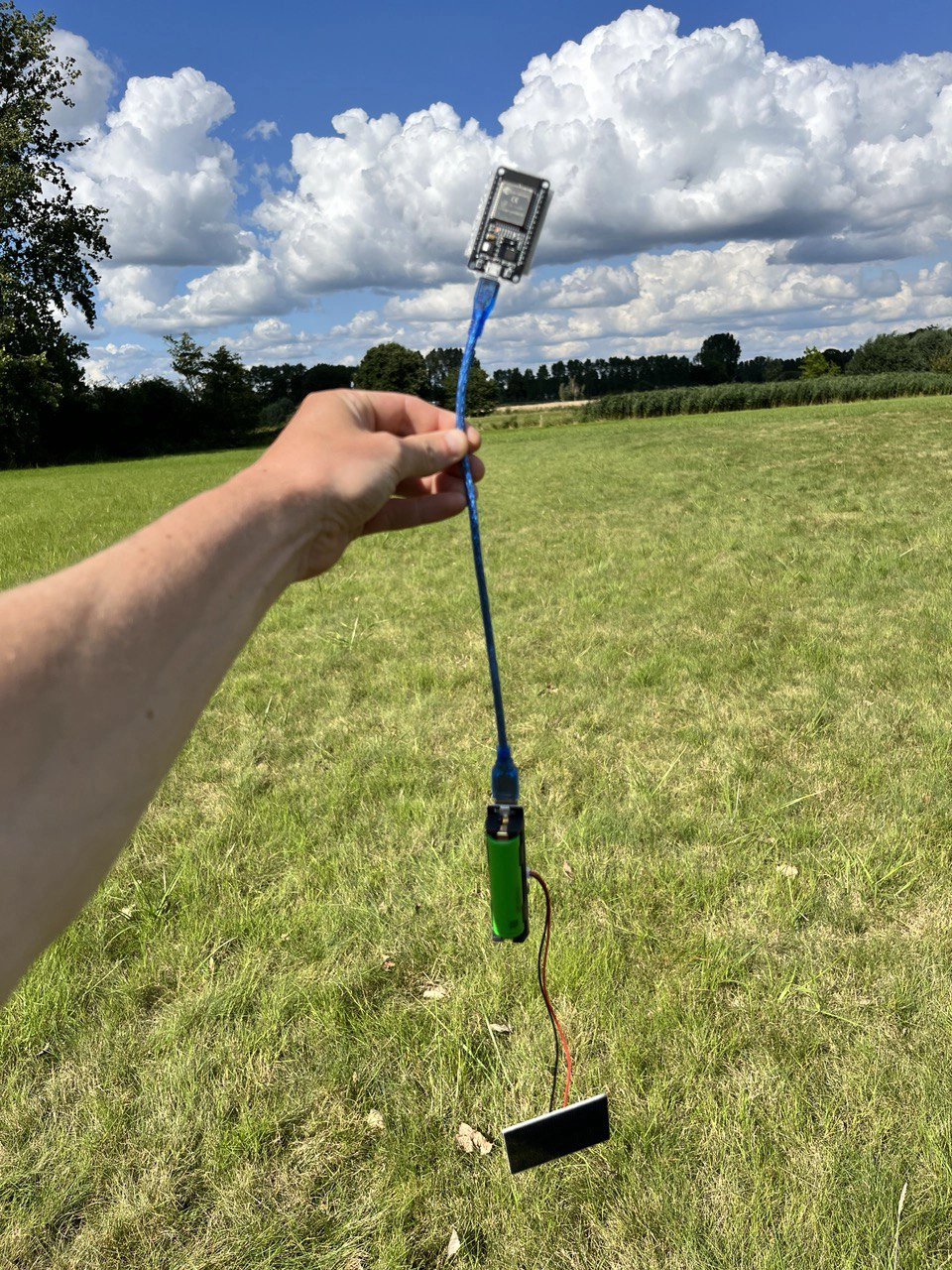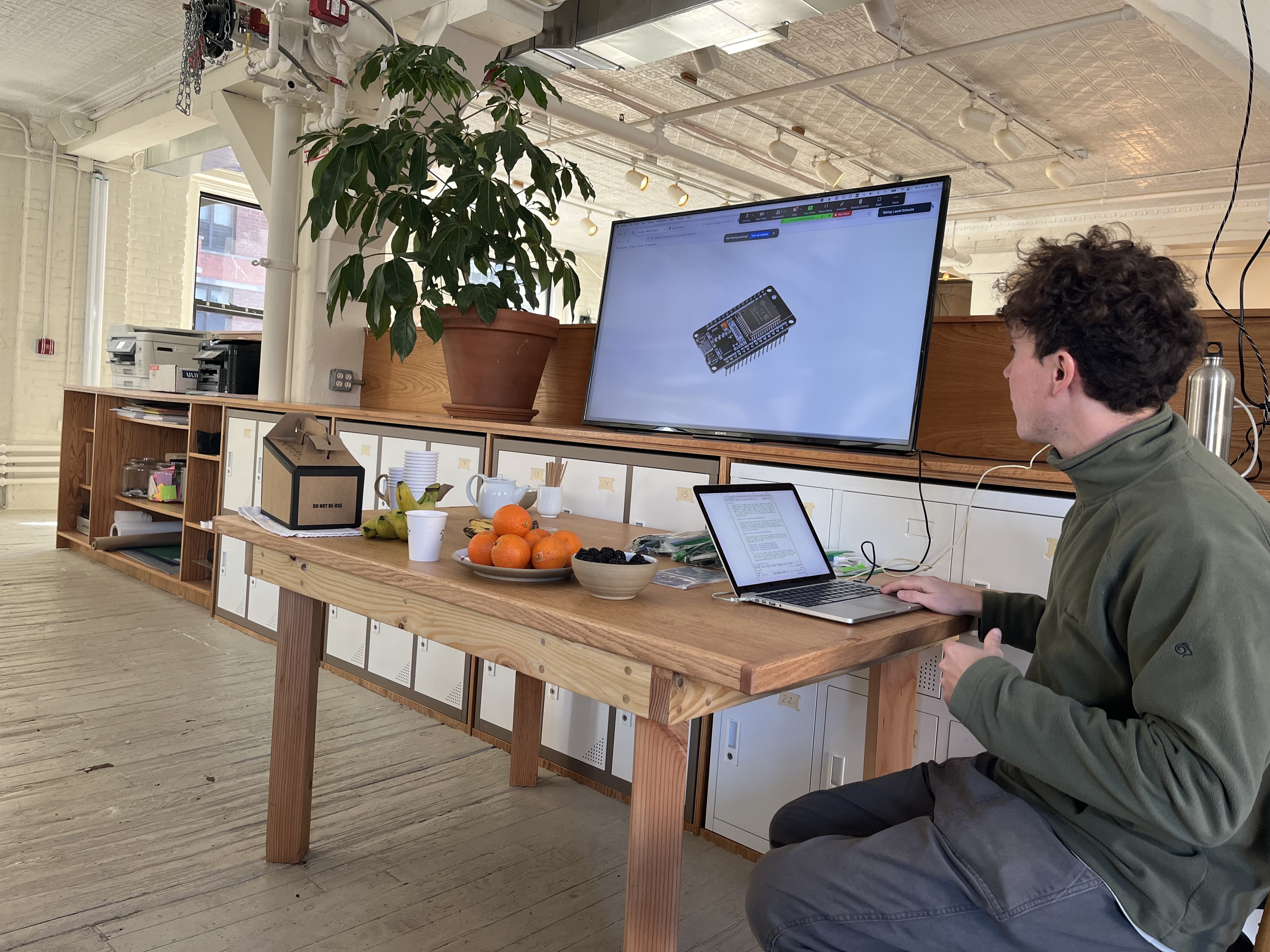Ultralight Computer + Visit to NYC
12.07.2024
#workshop#teaching
#coding in situ
#computing
#work
In January of 2024, I went to New York City. I had been invited by Laurel Schwulst to give a workshop as part of her Ultralight: Lightweight Websites in Time & Place course. Laurel invited me to think through how to give a workshop that explored the idea of an ultralight computer.
Since taking part in the Hackers & Designers Summercamp of 2023, I had been very interested in the use of a small computing module called an ESP32. It was a basic development board that had a WiFi module built into it that allowed you to create a hotspot directly from the board itself. During the summercamp, it had been used during a workshop run by Meike Hardt where we imagined what a infrastructure built with love would look like and then created small websites (less than 1MB) that would be loaded onto these ESP32 modules. The modules then created a WiFi hotspot that when connected to would load the small website onto your device, much like connecting to the internet at an airport or a hotel.
One of the beautiful things about these small development boards is the minimal power usage. They can be powered using a basic battery and even run for a certain amount of time on solar power alone. The devices themselves weigh only 30 grams.
Laurel's invitation to think about these devices as ultralight computers brought together a series of thoughts I had been having about how the ESP32 module could become a tool to explore Coding in Situ. If these small, low-power, lo-fi computers could be programmed and used in any location due to their solar-powered capabilities and transportable size, they could become something of a travel companion or alternatively a site-specific computer embedded within the environment.

I landed in New York City on the 14th of January and was greeted by biting cold weather. When I woke up the next day I found a layer of snow covering the backyards I could see out of the window. I decided to stay in the city for three weeks in total so I could get a feel for the place and meet some of the people whose work I had spent a long time admiring from afar.
I spent much of my time walking from place to place. A 2-3 hour walk through the snow felt like the right thing to do at the time (looking back now it's no surprise that I got sick halfway through the trip). It felt like I saw so much everyday but when I returned home and looked up where I had been, I had really just been in one tiny part of the city. I visited the The Noguchi Museum, I was inspired by a doughnut at the Little Flower Cafe, and I crossed the Brooklyn Bridge and took a photo of course.

I joined the Ultralight course for Marie Otsuka's session. Marie's lecture and tutorials were about how to imbue websites with a sense of time which she eloquently explained both conceptually and technically. It made me realise how closely related both our subjects were, both time and place. I had not thought too closely about the concept of time in relation to Coding in Situ, only that there could be ways in showing it's passing. But of course, the idea of doing something in situ is not just about the place but also the time in which it is done.
My workshop, which took place a week later than planned because of illness, consisted of two parts: a lecture and a working session. I first talked about the weight of a network: how heavy is the internet? 17 years ago an article was published on the Guardian claiming it to be about 60g (this was just about the active electrons transmitting information) however I found this view to be a bit limiting in considering what the internet actually is: cables, servers, buildings, computers, people, etc etc.
I wondered during this time how the internet could be so material and heavy, yet feel so intangible and light. In my lecture I presented strategies for returning to the materiality of the web through some specific tools but also through the concept of coding in situ. As well as the prompt for using an Ultralight Computer.

The uses of the ultralight computer and the websites created by the participants of the workshop were quite inspiring. Even though the workshop took place in just one large room (Index Space), each group found a way to dedicate a site to a very specific place. Whether it was a plant, a window, a dogs basket, or the kitchen, each site observed and became part of the space. In the short time we had, little seeds of potential were planted that could develop into something quite beautiful.
When I look back at the visit to the city, not a lot of it feels ultralight which makes those moments of ultralightness feel special. I am thankful to all the people that I met whilst I was out there and for all the conversations and adventures that they took me on. I am thankful to Collette for taking care of me when I was sick. I am thankful to Laurel for inviting me over and for facilitating the workshop and helping me navigate New York. And I'm thankful for all the participants trust that something I was speaking about was worth saying and for their dedication to the ultralight computer.
Back…